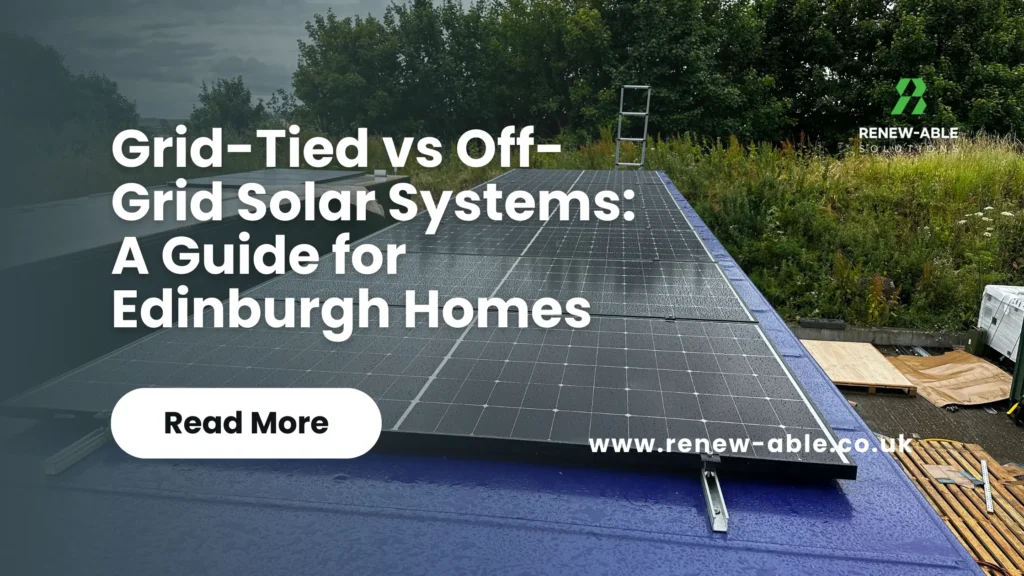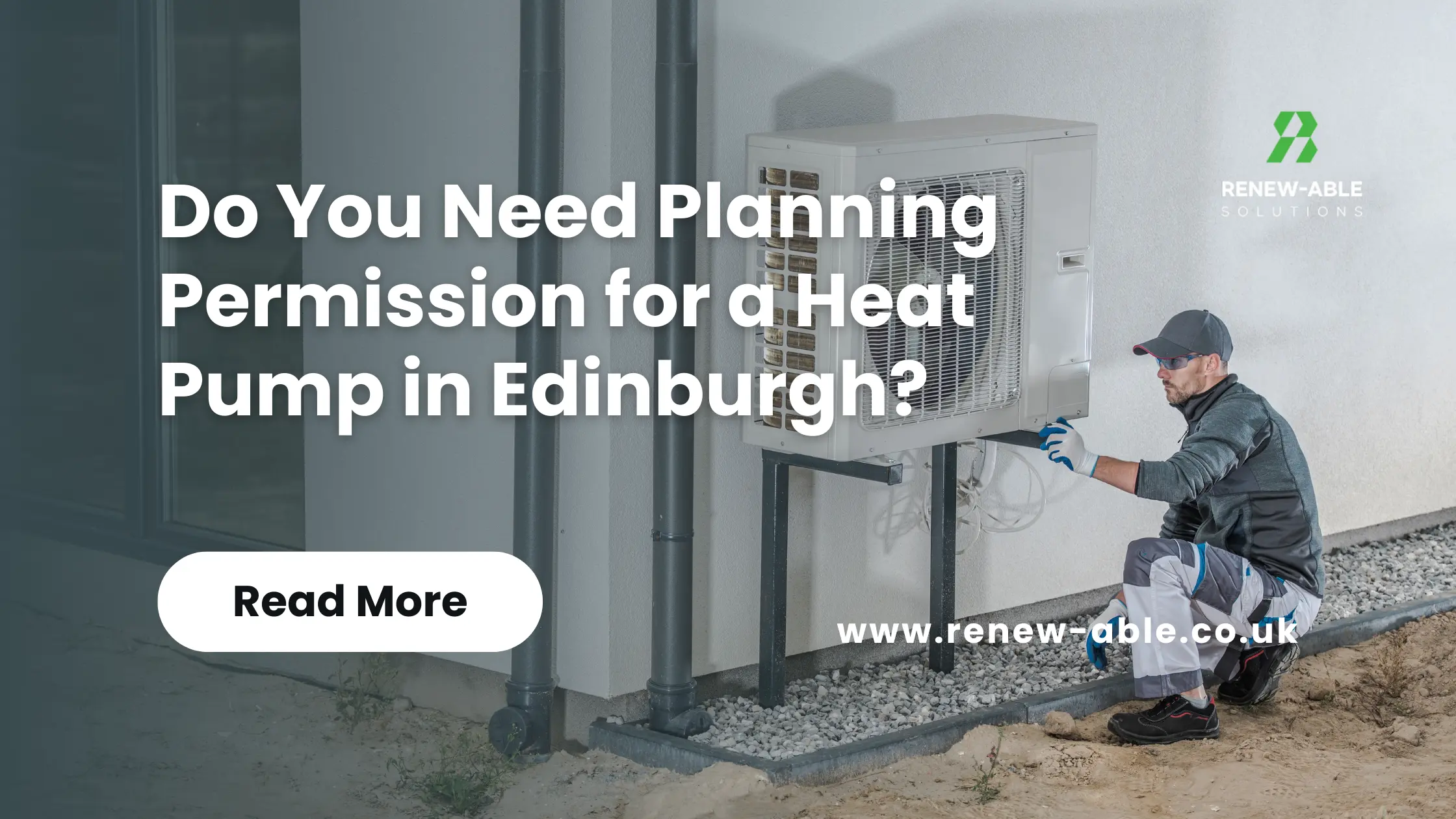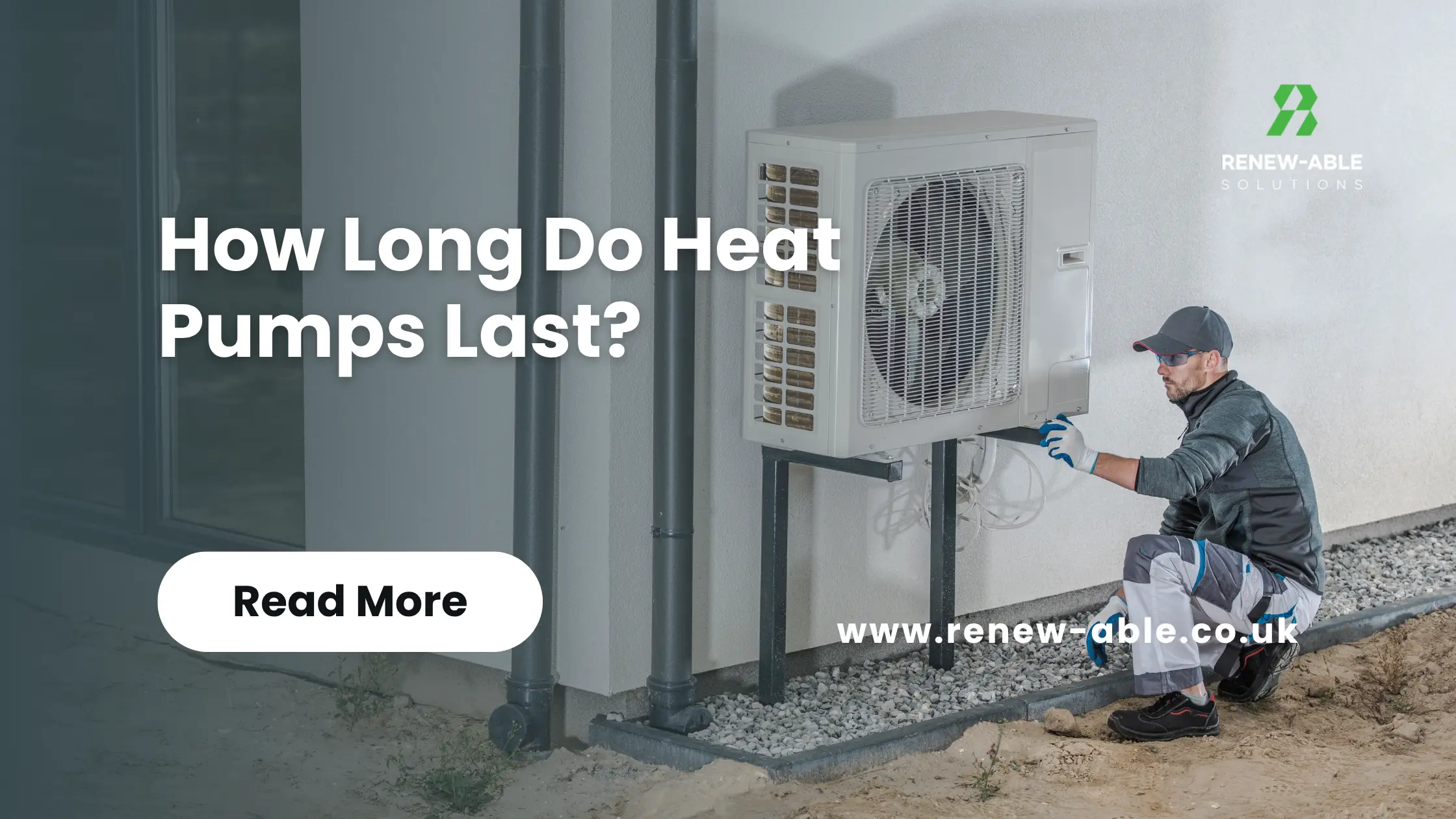Many Edinburgh homeowners are exploring solar panel installation to cut bills and carbon emissions. Scotland’s solar PV already provides over 410 MW, enough to power around 90,000 homes. This shows solar panels’ worthiness despite Scotland’s less sunny climate. Now the real question for many homeowners is: Should I opt for a grid-tied or an off-grid solar system?
We compare both systems so that you can make an informed decision based on your energy needs, budget, and long-term goals.
What is a Grid-Tied Solar System?
A grid-tied solar system is connected to the utility power grid. It includes rooftop PV panels and an inverter linked to the local network. During sunny days, your home uses solar power first; any extra electricity flows into the grid.
Conversely, when solar isn’t generating enough (at night or on cloudy days), you can get power from the grid as usual. Grid-tied setups do not require large batteries for basic operation, because the grid acts as backup.
These Systems are the standard choice for most new installations in the UK, including Edinburgh, because the Government encourages rooftop solar as part of its energy independence plans.
Homeowners can even earn from excess generation because the UK’s Smart Export Guarantee (SEG) pays for solar energy fed back into the grid.
Pros
- Lower upfront cost because you don’t need to invest in expensive battery storage.
- Backup reliability, as the grid provides unlimited power when solar is low.
- Exporting surplus power under SEG provides revenue.
- UK regulations and installers routinely support grid connections and export tariffs.
- Most Scottish homes have mains access, so installing a grid-tied solar system is simple.
Cons
- No power during grid failures (the inverter shuts off for safety).
- For an isolated area with no grid access, this setup is not feasible.
- You remain reliant on utility prices and policies.
What is an Off-Grid Solar System?
An off-grid solar system is completely disconnected from the utility grid. It generates and stores all the energy that your home needs by using solar panels, inverters, and battery storage. There’s no connection to the utility grid, so you rely solely on your own system to power your home, day and night.
Off-grid homes typically also use backup generators or additional renewables like wind or hydro to ensure power during low-sun periods. The UK Energy Saving Trust explains that off-grid solar schemes are most sensible where no mains supply exists (remote cabins, islands, rural lodges). For completely isolated homes, an off-grid solar + battery system can be cheaper than connecting to the grid.
For Edinburgh homeowners, true off-grid living is uncommon. Our city is well-served by the grid, so only very rural or speciality projects might consider it.
Pros
- Full independence and no grid means no import/export, and you are truly self-sufficient.
- Great for remote properties with no reliable grid.
- Offers flexibility to combine solar with wind or hydro.
- In the right location, it can be cost-effective over many years versus trenching lines for a grid hook-up.
Cons
- Extra batteries and equipment make off-grid systems much more expensive upfront and in maintenance.
- Components wear out faster as batteries typically last 5 years.
- No SEG payments as all power usage is internal.
Grid-Tied vs Off-Grid
| Feature | Grid-Tied Solar System | Off-Grid Solar System |
| Grid Connection | Connected to the national grid; exports/imports power. | No grid connection; completely isolated. |
| Energy Storage | Batteries are optional as the grid acts as backup. | Batteries are required to store all excess. |
| Reliability | Very reliable (uses grid supply when needed). | Depending on weather/storage, backup is needed. |
| Self-Sufficiency | Partial – uses grid for shortfall. | 100% self-sufficient (if the system is sized properly). |
| Initial Cost | Lower (no mandatory batteries). | High (battery bank and backups add cost). |
| Ongoing Costs | Lower maintenance; may earn SEG payments. | Higher maintenance (battery replacement every ~5 years). |
| Typical Use | Most homes/businesses (especially urban/suburban). | Remote homes, cottages, and cabins without a grid. |
| Government Incentives | Eligible for Smart Export Guarantee payments. | No exports, but may qualify for renewable grants. |
| Energy Independence | No, relies on the grid. | Yes, completely independent of the utility grid. |
| Best for | City/suburban homes (like Edinburgh homes). | Remote/rural locations (off-grid cabins, farms). |
How to Choose the Right Solar System for Edinburgh Homeowners?
Grid-Tied Systems are the go-to choice for most Edinburgh properties. They offer the best balance of cost, simplicity, and reliability. You can also check the solar panel cost in Edinburgh. If your home has a reliable grid connection, as almost all homes do, a grid-tied solar installation will cover much of your needs with no disruption.
Moreover, surplus solar helps the grid, and batteries or tariffs (like smart export) help you financially. Even in Scotland, where the grid is stable and winters are less sunny, homeowners benefit from tying into the network. Grid-tied systems achieve the fastest payback due to lower equipment costs and ongoing SEG income.
Off-Grid Systems make sense in very special cases. Think of a rural Scottish croft with no connection line nearby, or an eco-lodge on an island. These owners need complete energy independence and are willing to pay for it.
They usually install a mix of solar panels, wind turbines, and a large battery bank. Off-grid systems demand more storage to cover long, dark winters or plan for backup like a generator. In the suburbs or the city, going off-grid is generally not practical because the grid is available and usually cheaper to use with battery backup.
Tips to Choose the Right Solar System in Edinburgh
Assess Your Location
If you have a reliable grid and decent space for panels, a grid-tied system is usually the best value. Off-grid is only for truly isolated cases.
Consider Batteries
Even grid-tied homes can benefit from batteries. This lets you use more of your solar power at night or during peak-rate hours and provides backup. It’s a middle ground: you stay grid-connected but gain some energy independence advantages.
Think About Outages
Remember that standard grid-tied inverters shut off in a blackout. If you need backup power, you need an expensive inverter-battery setup or a generator. Truly off-grid gives backup power by design, but at a much higher cost.
Government Support
Here, solar installation costs are 0% VAT, and you earn SEG payments on exports. Neither system has installation subsidies at present, but lower VAT helps everyone. Check for Scottish grants or schemes for batteries or heat pumps, if available.
Renewable Partners
For advice specific to Edinburgh and Scotland, consult trusted sources like www.renew-able.co.uk. They offer guidance and Solar system installation services.
Final Words
Choosing between a grid-tied and an off-grid solar system comes down to your goals and circumstances. I hope this guide helps all the Edinburgh homeowners to make a more informed decision based on their energy needs, location, and budget.








